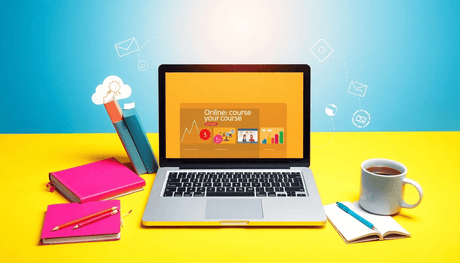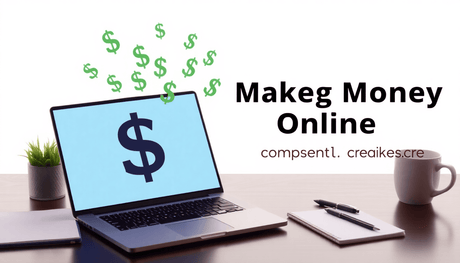Understanding the concept of a learning path is crucial for enhancing customer education. A learning path is a structured sequence of educational content designed to guide customers in acquiring specific skills or knowledge. By creating an easy-to-build learning path, businesses can significantly benefit by improving customer education and satisfaction levels.
For instance, a well-defined learning path can include modules on Amazon SEO or Technical SEO, both of which are essential for businesses aiming to dominate eCommerce sales.
Understanding the Basics of a Learning Path
A learning path is a carefully structured sequence of educational content designed to guide customers through their customer journey toward acquiring specific skills or knowledge. This approach goes beyond random access to information by offering an intentional progression, ensuring learners develop competencies in a logical and effective manner. Each step builds on the previous one, creating a clear roadmap for skill acquisition.
Key features of an effective learning path include:
- Structured content delivery: Courses or modules are arranged to gradually increase in complexity.
- Focused objectives: Every segment targets distinct learning outcomes.
- Guided progression: Customers follow a defined route that minimizes confusion and maximizes retention.
Well-designed learning paths provide customers with clarity about what to expect and how to advance. This clarity improves the overall customer experience by reducing frustration and increasing confidence in mastering new skills. When learners feel supported and see measurable progress, satisfaction levels rise significantly. Businesses benefit as engaged, knowledgeable customers tend to remain loyal and advocate for the brand.
Creating a learning path tailored to your audience means you address their needs systematically, enhancing both learning effectiveness and business impact. For instance, if your audience is interested in developing programming skills, you could create a learning path for Python 3, which would help them begin coding with Python 3 and level up their skills as a programmer.
Similarly, for those looking to enhance their web development skills, providing resources on web development tools could be beneficial. This would help them understand the basic foundations for web development.
Moreover, if your audience is involved in global business dealings, offering a course on international negotiation skills could be invaluable. This would equip them with essential strategies for mastering the art of global persuasion.
Lastly, for users interested in automating tasks within Google services, a guide on the new Google Apps Script IDE could provide them with the necessary knowledge to rapidly develop code for Google Services.
Why Building an Easy Learning Path Matters for Your Customers
Clear and intuitive learning paths have a direct impact on customer engagement. When customers can easily follow a structured sequence of content, they feel more confident navigating through your material. This confidence increases the likelihood that they will stay engaged, complete more courses, and interact more deeply with your brand.
Engaged customers tend to have higher satisfaction levels. A well-crafted learning path removes confusion and frustration by providing clear guidance on what to learn next. This structured approach not only makes the experience enjoyable but also builds trust in your product or service because customers see tangible value in the education you provide.
Customer retention improves as a result of these positive experiences. When learners achieve their goals efficiently, they are more likely to return for additional training or make repeat purchases. This cycle of engagement and satisfaction contributes to long-term business success.
Effective learning paths also play a crucial role in support reduction. By empowering customers to find answers independently within the learning materials, you decrease the volume of support queries. Self-service options embedded in the learning path—such as FAQs, troubleshooting guides, or interactive quizzes—help customers resolve issues without needing direct assistance. This not only saves time and resources but also enhances customer autonomy and confidence.
You create a win-win situation: customers get smoother, faster solutions while your support team can focus on more complex challenges.
Key Steps to Build the Easiest Learning Path for Customers
1. Define Clear Objectives
Setting learning objectives is the foundation of any effective learning path. These objectives act as a compass, guiding both you and your customers toward specific skills or knowledge they should acquire. Clear goals help maintain focus, ensuring the learning experience is purposeful and not just a collection of random content.
You want your learning path to be goal-oriented content that directly addresses what customers need to achieve. This means every module, video, quiz, or article should tie back to these objectives. For example, if your goal is to teach customers how to use a software feature efficiently, the content must be designed around practical tasks and outcomes related to that feature.
Outcome-based education prioritizes measurable results. When objectives are explicit, you can easily track progress and success. Customers understand what they’re working toward, which increases motivation and engagement. You also get valuable feedback on whether the learning path delivers real value or needs adjustment.
Use these tips when defining your objectives:
- Write objectives that are specific, measurable, achievable, relevant, and time-bound (SMART).
- Focus on what customers will be able to do after completing the path.
- Avoid vague goals like “understand” or “learn”; instead use action verbs such as “apply,” “create,” or “demonstrate.”
- Align content tightly with each objective to avoid irrelevant material that can confuse or overwhelm learners.
Clear objectives provide structure and direction—the essentials for The Easiest Way to Build a Learning Path for Your Customers. This clarity benefits both you as a creator and your customers by making the entire process more efficient and rewarding.
In addition to these strategies, it's important to consider incorporating elements from various disciplines into your learning path. For instance, understanding the principles of educational psychology can provide valuable insights into how people learn best.
2. Understand Your Audience
To create an effective learning path for your customers, it's crucial to understand who they are and what they need. This involves gathering information about their demographics, preferences, and prior knowledge. By tailoring the learning path based on this understanding, you can ensure that the content resonates with your audience and meets their specific requirements.
Key Steps to Build an Easy Learning Path for Customers
Here are some key steps you can follow to build an easy learning path for your customers:
- Customer Profiling: Start by identifying the different types of customers you have. This could include factors such as age, profession, industry, or any other relevant characteristics. Create profiles for each customer segment to gain insights into their motivations and learning preferences.
- Learner Needs Assessment: Conduct surveys or interviews with your customers to understand their specific learning needs. What skills do they want to develop? What challenges are they facing? By gathering this information directly from your audience, you can design a learning path that addresses their pain points and goals.
- Skill Level Adaptation: Recognize that not all learners will have the same level of expertise in a particular subject. Some may be beginners while others may already have advanced knowledge. It's important to adapt the complexity of your content accordingly. Provide foundational resources for beginners and more challenging materials for advanced learners to ensure everyone can progress at their own pace.
By implementing these strategies, you can create a learning path that is tailored to your audience's needs and preferences. This will increase engagement and motivation among your customers, leading to better learning outcomes.
"Understanding your audience is key to creating content that resonates with them." - Unknown
3. Organize Content Logically
Arranging your learning path starts with content sequencing that respects the natural order of skill acquisition. Begin with foundational topics that introduce essential concepts and terminology. This approach allows learners to build confidence before moving into more complex material. Structure modules progressively to support goal-oriented content aligned with clear learning objectives. Each step should reinforce previous knowledge while preparing learners for the next challenge.
Designing a course structure focused on outcome-based education helps maintain learner motivation. When customers see how each module contributes to their overall goals, engagement increases. Logical organization minimizes confusion and reduces cognitive overload, making it easier for customers to follow the path.
This method exemplifies The Easiest Way to Build a Learning Path for Your Customers: a smooth progression from basic to advanced levels ensures clarity and maximizes retention while meeting specific educational outcomes.
4. Use Various Learning Formats
To meet diverse learning objectives and deliver goal-oriented content, incorporating multiple formats within your learning path is essential. Different customers absorb information uniquely, making multimedia learning a powerful strategy to enhance understanding and retention. Videos provide visual and auditory stimuli that simplify complex topics, while articles offer detailed explanations for those who prefer reading.
For instance, if a customer wants to learn about using Microsoft Excel like a Pro, a video tutorial could be beneficial. On the other hand, someone interested in mastering Dynamic JavaScript for creating interactive web pages might prefer an in-depth article.
Interactive elements such as quizzes and hands-on exercises transform passive consumption into active learning, reinforcing key concepts through immediate application. These engagement techniques promote deeper comprehension and help track progress toward intended outcomes, a core principle of outcome-based education. Including varied formats keeps learners motivated by breaking monotony and accommodating different preferences.
Building a learning path with videos, text, quizzes, and interactive modules ensures accessibility for all skill levels and learning styles. This approach supports your goal to make The Easiest Way to Build a Learning Path for Your Customers truly effective—guiding them step-by-step with content that adapts to how they learn best.
Moreover, if you're looking to increase your email subscribers through effective strategies, enrolling in a MailChimp course could provide valuable insights into turning website visits into email subscriptions. Similarly, those interested in leveraging online marketing can benefit from understanding the use of affiliate sales funnels and landing pages, which are crucial components of successful online sales strategies.
5. Set Milestones and Assessments
Keywords: "learning objectives, goal-oriented content, outcome-based education, The Easiest Way to Build a Learning Path for Your Customers, learning objectives, goal-oriented content, outcome-based education, Briefly mention that we will be discussing some key steps to build an easy learning path for customers., progress tracking, learner assessment, checkpoints".
Talking points:
- Including milestones within the learning path to mark significant progress points for learners and motivate them along their journey.
- Utilizing assessments strategically at key stages to reinforce knowledge retention and ensure understanding of the material.
6. Provide Flexibility
In outcome-based education, it's essential to focus on the learning objectives and ensure that the content is goal-oriented. This not only aids in building an effective learning path but also aligns with the principles of self-paced learning.
Allowing customers the flexibility to learn at their own pace by providing options for self-paced study or enabling them to revisit content as needed for deeper comprehension is crucial. Such an approach fosters learner autonomy and significantly enhances the learning experience. Furthermore, incorporating elements of self-paced learning allows customers to take control of their educational journey, making it more personalized and effective.
7. Leverage Technology
Keywords: "learning objectives, goal-oriented content, outcome-based education, The Easiest Way to Build a Learning Path for Your Customers, learning objectives, goal-oriented content, outcome-based education, Briefly mention that we will be discussing some key steps to build an easy learning path for customers., LMS platforms, course management tools, tracking systems".
Talking points:
- Utilizing technology like Learning Management Systems (LMS) or course management tools can simplify both creation and management aspects of building effective customer-focused learning paths.
8. Gather Feedback and Iterate
Establishing ways to collect user feedback throughout their experience with the learning path enables ongoing improvement based on real-world usage data.
By implementing user feedback loops, you can continuously improve the learning path based on the needs and preferences of your customers. This iterative process ensures that the content remains relevant, engaging, and effective in helping customers achieve their learning objectives. Gathering feedback also allows you to identify any areas that may need clarification or further explanation, leading to a more seamless learning experience for your audience.
Using continuous improvement strategies based on user feedback is essential in creating a customer-centric learning path that aligns with their goals and expectations. It demonstrates a commitment to providing high-quality, goal-oriented content that supports outcome-based education for your customers.
How Uthena’s White-label PLR Courses Simplify Building Learning Paths for Your Customers Fast!
Uthena offers a collection of ready-made, high-quality video courses with PLR (Private Label Rights) licenses tailored for entrepreneurs, educators, and content creators. These courses serve as a powerful resource when you want The Easiest Way to Build a Learning Path for Your Customers without starting from scratch.
Key benefits include:
- Customizable content that aligns perfectly with your learning objectives
- Professional-grade production ensuring engaging and effective material
- Ability to brand, resell, or adapt courses, saving you time on content creation
- Quick deployment to accelerate your customer education initiatives
Uthena PLR courses empower you to deliver structured learning paths efficiently while maintaining top-notch quality.
Practical Tips for Implementing Your Customer Learning Path Quickly Using Uthena’s Courses!
- Prioritize key topics aligned closely with target audience needs.
- Focus initially on essential milestones before expanding into advanced areas.
Conclusion
Building The Easiest Way to Build a Learning Path for Your Customers starts with leveraging powerful tools like Uthena’s PLR courses. These resources simplify and supercharge your customer education strategy, helping you deliver clear, effective learning experiences.
- Create seamless journeys from the very first interaction through post-purchase support.
- Use well-structured content to empower customers and reduce friction.
- Drive sustainable growth by investing in education that truly resonates.
Take action now to transform how your customers learn, engage, and succeed with your brand.
FAQs (Frequently Asked Questions)
What is a learning path and why is it important in customer education?
A learning path is a structured sequence of educational content designed to guide customers in acquiring specific skills or knowledge. It plays a crucial role in customer education by enhancing the overall customer experience and satisfaction levels through clear, goal-oriented progression.
How does building an easy learning path benefit both businesses and customers?
Creating an easy-to-build learning path benefits businesses by improving customer engagement, retention, and reducing support queries as customers find answers independently. For customers, it offers a seamless and intuitive learning experience that fosters skill acquisition and satisfaction.
What are the key steps to building the easiest learning path for customers?
Key steps include defining clear objectives aligned with desired outcomes, understanding your audience's needs and skill levels, organizing content logically from basic to advanced concepts, using various engaging learning formats, setting milestones with assessments, providing flexibility for self-paced learning, leveraging technology like LMS platforms, and gathering feedback for continuous improvement.
How can diverse learning formats enhance customer engagement in a learning path?
Incorporating multimedia elements such as videos, articles, quizzes, and interactive content caters to different learning styles and keeps learners engaged throughout their journey. This variety helps maintain interest and improves knowledge retention within the learning path.
What role does technology play in simplifying the creation of effective customer learning paths?
Technology tools like Learning Management Systems (LMS) and course management platforms simplify the creation, delivery, and tracking of learning paths. They enable efficient organization of content, progress monitoring, and facilitate updates based on user feedback to ensure an effective educational experience.
How do Uthena’s white-label PLR courses help entrepreneurs build customer-focused learning paths quickly?
Uthena offers ready-made high-quality video courses with Private Label Rights (PLR) licenses that entrepreneurs and educators can leverage to rapidly assemble comprehensive customer learning paths without compromising quality. These courses streamline setup by providing essential content aligned with audience needs, enabling faster implementation and scalable customer education strategies.









